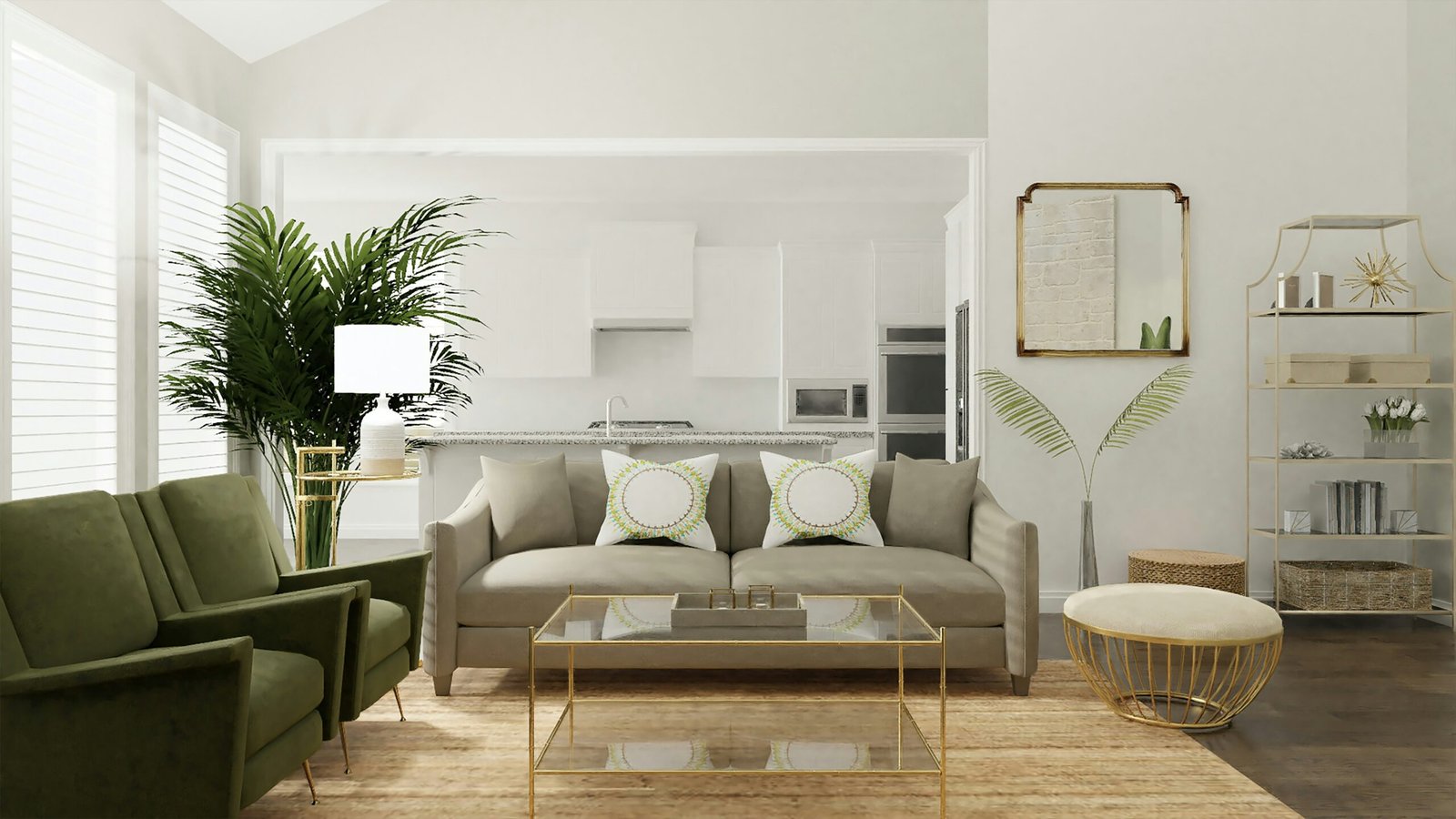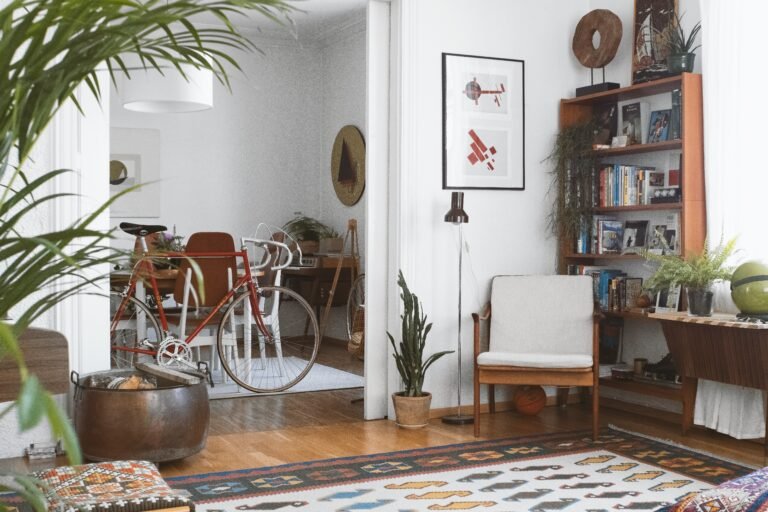Incorporating mixed metals into your home design is a sophisticated way to add depth, character, and a curated feel to your spaces. By thoughtfully combining elements like gold, silver, brass, and others, you can create a harmonious and visually engaging environment. However, achieving the perfect balance requires understanding the nuances of metal mixing. This comprehensive guide will walk you through the essential dos and don’ts, ensuring your home exudes a cohesive and stylish aesthetic.
Understanding Metal Tones and Finishes
Before diving into the specifics of mixing metals, it’s crucial to grasp the different tones and finishes available:
- Warm Metals: These include gold, brass, and copper, characterized by their yellow, orange, or red undertones. They bring warmth and richness to a space.
- Cool Metals: Metals like silver, chrome, and stainless steel fall into this category, offering blue or gray undertones that impart a sleek and modern feel.
- Neutral Metals: Black and wrought iron are considered neutral and can seamlessly blend with both warm and cool metals, providing contrast and grounding elements in your design.
Finishes also play a significant role in the overall look:
- Polished: High-shine surfaces that reflect light and add a glamorous touch.
- Brushed or Satin: These have a muted shine, offering a softer and more understated appearance.
- Matte: Non-reflective surfaces that provide a contemporary and subtle elegance.
The Dos of Mixing Metals
- Select a Dominant Metal
Begin by choosing one metal to serve as the primary finish, making up about 60-75% of the metal elements in a room. This dominant metal will set the tone and provide a cohesive foundation for your design.
- Incorporate One or Two Accent Metals
After establishing your dominant metal, introduce one or two complementary accent metals. This approach adds visual interest without overwhelming the space. Ensure these accent metals contrast sufficiently with the primary metal to create a balanced look.
- Consider Metal Undertones
Pay attention to the undertones of the metals you’re combining. Mixing warm and cool metals can work beautifully when done intentionally. For instance, pairing warm brass with cool polished nickel can create a dynamic and harmonious contrast.
- Vary Metal Finishes
Combining different finishes, such as polished, brushed, and matte, adds depth and texture to your design. For example, a polished chrome faucet can be complemented by brushed brass cabinet handles, creating a layered and sophisticated look.
- Distribute Metals Evenly
Ensure that each metal appears at least twice in a room to create a sense of intentionality and cohesion. This repetition helps the design feel balanced and thoughtfully curated.
- Use Transitional Pieces
Incorporate items that feature multiple metals to bridge different finishes seamlessly. For example, a light fixture that combines black and brass elements can tie together other black and brass pieces in the room.
The Don’ts of Mixing Metals
- Avoid Overmixing
Limiting your selection to two or three metal finishes per space prevents the design from feeling chaotic. Overmixing can lead to a cluttered and uncoordinated appearance.
- Don’t Cluster Different Metals Together
Distribute various metal finishes throughout the space rather than grouping them all in one area. This approach maintains balance and prevents certain sections from feeling disjointed.
- Steer Clear of Mixing Similar Metals
Combining metals with similar tones, like brass and gold, can appear as a mismatched attempt to coordinate. Instead, opt for metals with distinct contrasts to create a more deliberate and stylish effect.
- Be Cautious with Fixed Fixtures
For permanent fixtures such as faucets and lighting, it’s advisable to keep them in the same finish to ensure a cohesive look. Mixing metals in these elements can sometimes result in a fragmented appearance.
- Don’t Forget the Room’s Overall Aesthetic
Ensure that the mixed metals align with the room’s style and color palette. The combination should enhance the existing design elements rather than clash with them.
Room-by-Room Guide to Mixing Metals
The kitchen offers numerous opportunities to mix metals, including faucets, cabinet hardware, lighting fixtures, and appliances.
- Dominant Metal: Choose a primary metal for the majority of fixtures, such as stainless steel for appliances and sinks.
- Accent Metals: Introduce accent metals through cabinet handles, light fixtures, or barstools. For instance, matte black hardware can contrast beautifully with stainless steel appliances.
- Consistency: Maintain consistency in metal finishes for items that are at the same visual level. For example, if your cabinet hardware is brass, consider brass or complementary metal finishes for your lighting fixtures.
In bathrooms, metals are prevalent in faucets, showerheads, towel bars, and mirror frames.
- Dominant Metal: Select a primary metal for the main fixtures like faucets and showerheads. Polished nickel is a versatile choice that pairs well with various accents.
- Accent Metals: Use accent metals for accessories such as towel bars, mirror frames, and lighting. A brushed gold mirror frame can add a touch of luxury against chrome faucets
The living room allows for creative metal mixing through decor items, light fixtures, and accent furniture.
- Dominant Metal: Choose a consistent finish for major elements like coffee table legs, curtain rods, or lighting fixtures. Brushed brass or matte black can serve as a sophisticated base.
- Accent Metals: Incorporate smaller metal accents through picture frames, vases, or decorative objects. A combination of brass and silver elements on a black metal console table can look balanced and intentional.
- Balance: Make sure metals are evenly distributed across the room. A few metallic picture frames on one side should be balanced with a metallic lamp or decor piece on the opposite side.
Bedroom
Bedrooms often feature metallic elements in bed frames, lighting fixtures, and decorative accents.
- Dominant Metal: Consider the finish of your bed frame or headboard as the primary metal. For example, a black wrought iron bed frame can serve as a neutral base.
- Accent Metals: Gold bedside lamps or silver drawer pulls can add complementary touches without overwhelming the space.
- Soft Touches: Use textiles like metallic-threaded pillows or blankets to subtly tie different metal tones together.
Entryways are an ideal space for experimenting with metal combinations since they are typically smaller and transitional.
- Dominant Metal: Choose a dominant metal for functional pieces like coat hooks or console table hardware.
- Accent Metals: Introduce a second metal through a mirror frame or decorative bowls. Mixing black and brass in this area can create a welcoming and stylish entry.
Tips for Success
- Balance Texture and Tone: Ensure that there’s a good mix of both shiny and matte finishes. For instance, a polished brass light fixture can pair well with a matte black cabinet knob.
- Consider Light and Space: In rooms with ample natural light, polished metals can enhance brightness, while matte finishes can ground the space.
- Create Visual Flow: Use repetition to create a sense of continuity. Repeating a brass finish in multiple spots throughout the room ties the design together.
- Layer with Non-Metallics: Integrating natural materials like wood, stone, and fabric can soften the contrast between different metals, creating a more cohesive look.
- Personal Style Matters: At the end of the day, let your personal taste guide your choices. Mixing metals should reflect your unique aesthetic while following basic design principles.
Final Thoughts
Mixing metals in home design is not just a trend but a versatile way to add character and sophistication to any room. By carefully selecting dominant and accent metals, varying finishes, and maintaining balance, you can achieve a curated, stylish space that feels both dynamic and harmonious.
Whether you’re revamping a single room or planning a whole-home makeover, remember that intentionality is key. With these expert tips and thoughtful planning, you can master the art of mixing metals and create a home that truly shines.
For more design inspiration and tips, explore our latest articles on home decor trends and practical styling advice!
Alex is the creator of Homely Haven, a space dedicated to simple, stylish ideas for interiors and gardens alike. With a passion for cozy living rooms, inviting outdoor spaces, and practical DIY solutions, Alex shares tips and guides that help turn any house into a true home.
From budget-friendly decorating hacks to weekend garden projects, the goal is always the same: to inspire you to create spaces that feel personal, beautiful, and welcoming. When not writing, Alex is usually rearranging furniture, sketching new garden layouts, or exploring design trends for the next project.








